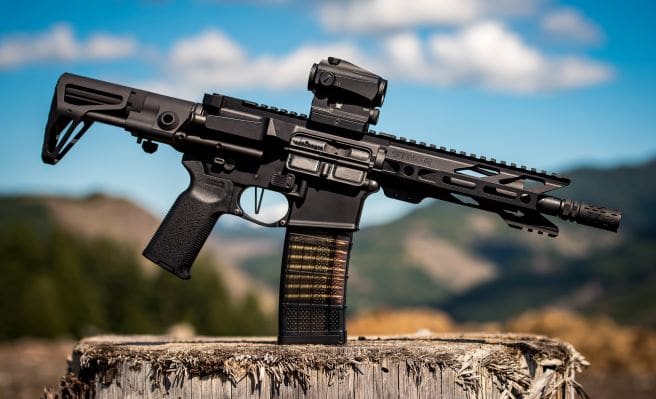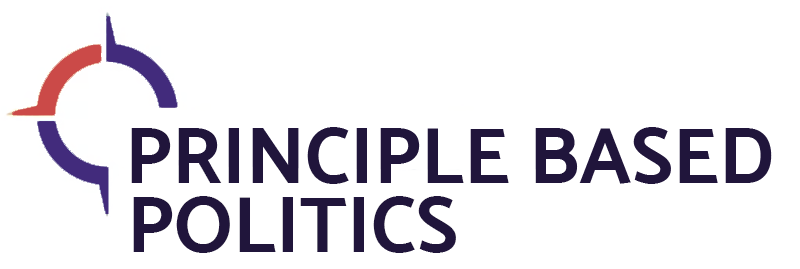
13 Jul Guns: Applying Principles to the Issues
“A well regulated Militia, being necessary to the security of a free State, the right of the people to keep and bear Arms, shall not be infringed.” So reads the Second Amendment to the United States Constitution.
There are things that can be known immediately about this amendment, and there are parts about which one must think hard. First, contrary to what kids used to joke, the “bear arms” wording has nothing to do with the right to wear short-sleeved shirts, or even to go sleeveless. Also, we know that the drafters made things more difficult than they needed to be through the odd punctuation and wording, particularly the mixing together of two topics and the placement of commas.
Now that we have gotten those easy points out of the way, what, exactly, does the Second Amendment mean? How does the militia part affect the arms part? What gun limits, if any, does this wording permit?
We will explore these questions in two posts. First, we will apply our principle-based process to analyze the impact of the Second Amendment on the issue of gun control in America. In our next post, we will look at how best to address our country’s gun problem through federal legislation.
Arms, and Not Infringing the Right to Them
Arms means weapons (plus ammunition), and Americans to date have fully exercised their right to have and hold such things. There are more guns than there are people in the country. It appears between 25 and 30 million additional weapons were purchased in 2020. That is approximately ten guns for every baby born in the nation during the same 12 months.
The problem is that around 40,000 Americans die of gun violence annually. Despite the chronic nature of the problem, it is when mass shootings occur—meaning four or more people shot—that the cry rings out most loudly to “do something about guns.” Those pleas raise the issue of whether the Second Amendment even allows any control of arms ownership and possession.
In the view of Principle Based Politics, the governmental principles that pertain to this basic issue are freedom, law and justice, protecting the vulnerable, and limited government. The leadership principle of peace also applies. The principles of peace and protecting the vulnerable go together in this context, combining to focus on stopping the bloodshed experienced by families across the land. Victims of gun crimes definitely qualify as vulnerable, as do the distraught who use guns to commit suicide. Any peace-loving leader would want to prevent the fear and anguish caused by all this mayhem.
On gun issues, the principle of limited government comes into play mostly in analyzing what governing body should do something about the problem, which will be a focus in our next post.
For today’s Second Amendment discussion, the principles that control are the duo of freedom and law and justice. The principle of law and justice demands that the law, including the Constitution, be followed by our government. Law and justice, therefore, requires the right to bear arms to be upheld (as the Supreme Court has done), irrespective of who does and who does not want it to be preserved. Similarly, freedom protects the individual rights of citizens, including the right to own and use guns.*
*The Supreme Court has interpreted the Constitution as saying the Second Amendment establishes an individual right, not one enforceable only by a militia group, as some have argued.
Our principles lead first to the conclusion that any across-the-board movement to ban guns would be an unconstitutional infringement. Citizens generally should be free to own and use ordinary guns for sports and personal protection. They should be free to collect guns if they so desire. They must be allowed to possess or carry their guns in most places, as that is what it means to “bear” arms. These are rights that simply cannot be taken away.
But should every individual in the country—regardless of criminal record and no matter how mentally ill or threatening the person is—be allowed to own a bazooka and carry it into a school? We do not think even the National Rifle Association or the most zealous gun enthusiasts recognize a Second Amendment right of a dangerous person to carry a dangerous weapon in a place where it would be dangerous to do so. Therefore, there really is no debate about whether the Second Amendment permits some form of gun control. It does.
The only questions are what governmental body can best protect the vulnerable, and what form of gun control would be the most effective, while still complying with the Second Amendment. Those are the questions Principle Based Politics will address in its next post.
A Well Regulated Militia
Let us now go back to the first part of the Second Amendment. There has been much recent attention to private groups forming in America and calling themselves “militias.” Sometimes these folks show up in public places, heavily armed, to protest or to make a point through a show of force. These groups cannot be what the drafters of the Second Amendment had in mind.
At the time of the Bill of Rights (amendments one through ten), the drafters of our constitutional documents wanted to protect the people of the new nation against abuse by the very national government they were creating. They had just experienced tyranny and oppression by a British king, after all. And they knew the new federal government would have an army and a navy and many other powers the king had had. The states’ ability to pull together an armed militia would help keep the federal government in check. This was something the Anti-Federalists in particular wanted.
Importantly, however, the Second Amendment used the words “well regulated” to describe the militia that would be “necessary to the security of a free State.” Historians have determined that the founders envisioned well-regulated militias being official, professional organizations operated by the people of the individual states.
Current “militia” groups in the United States may say they act as a protection against the federal government—just like the founders envisioned—or some state governments. But they do not appear to be claiming to be well-regulated, nor do they seem desirous of being regulated at all. They certainly are not official, professional organizations created by or protecting anyone but themselves. As such, they do not fall under any special shield of the Second Amendment.
Written by Quentin R. Wittrock, founder of Principle Based Politics.
Look for his posts twice each week, as this blog will explore and promote the idea of principle in politics, both as to individual elected leaders and our federal government as an institution.
Future political issues to be analyzed under our principle-based method include: taxation, climate change and the environment, regulation, abortion, social benefits programs (including Social Security), law enforcement, health care, and foreign relations.


Sorry, the comment form is closed at this time.